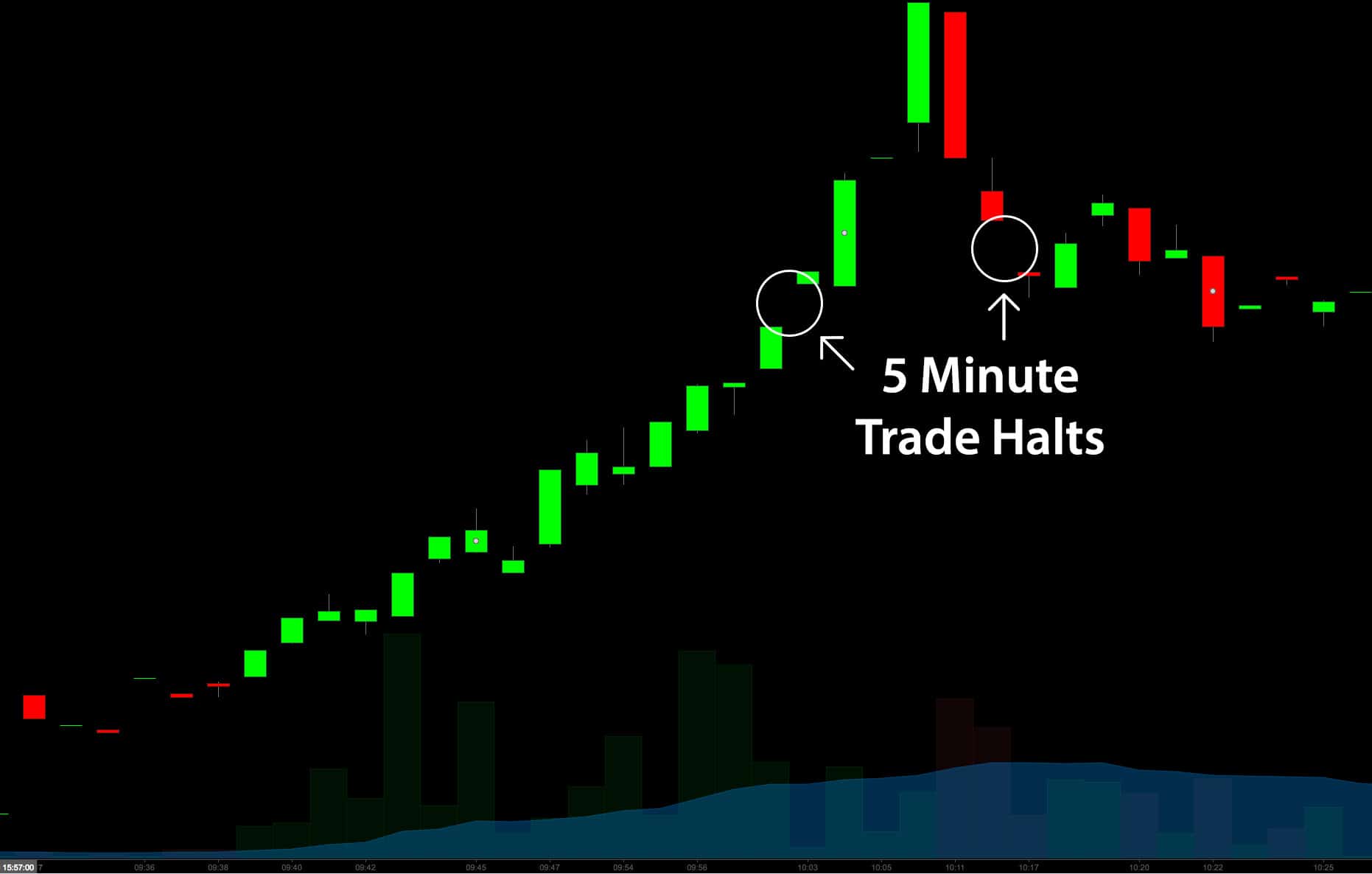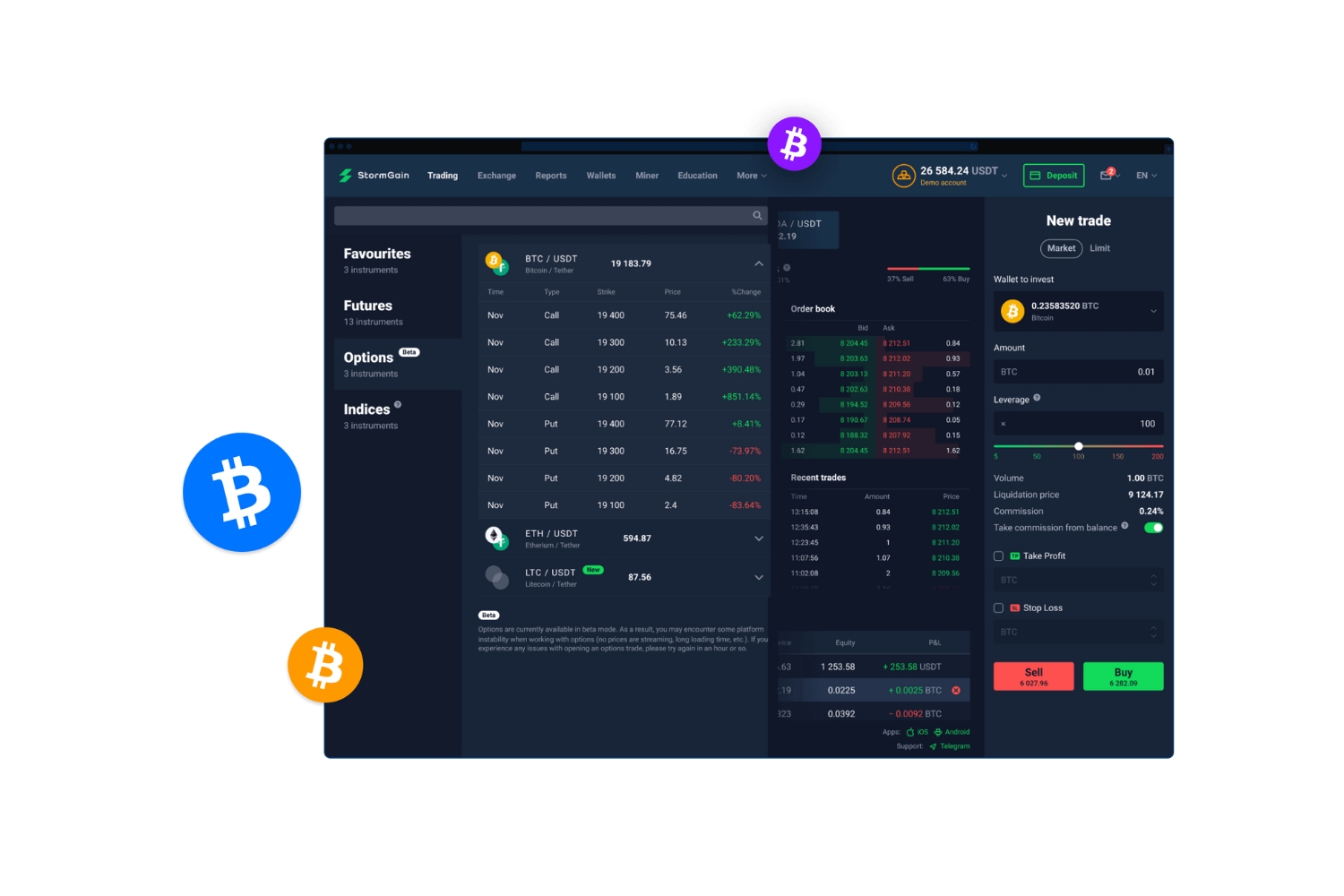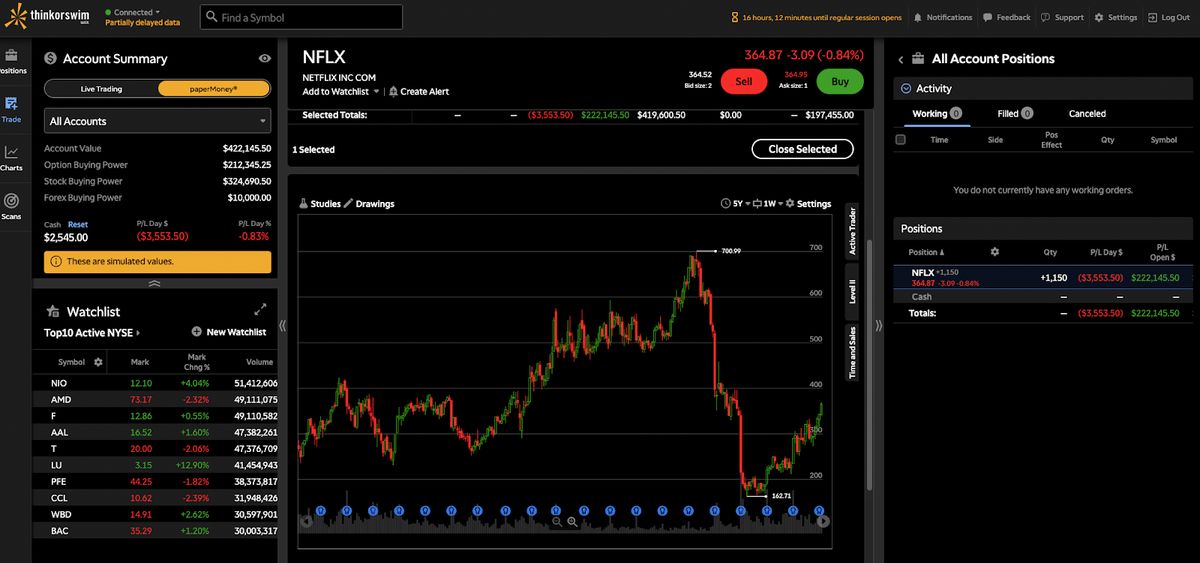What Is a Trading Security
A trading security refers to a financial instrument that is bought and sold in the financial markets with the primary objective of generating profits. These securities are investments that individuals or organizations purchase to potentially benefit from price fluctuations or income generation. Trading securities can include various types of financial instruments such as stocks, bonds, options, futures, and mutual funds.
Trading securities are considered liquid assets that can be easily converted into cash as they are actively traded in the market. These investments are typically held by traders and investors who actively monitor the market and make buying or selling decisions based on their analysis of market trends, economic indicators, and other relevant factors.
One of the key characteristics of trading securities is that they are marked-to-market, meaning their value is adjusted regularly to reflect their current market price. This allows investors to track the performance of their investments and make informed decisions regarding buying, selling, or holding onto these securities.
Moreover, trading securities can offer potential benefits such as capital appreciation, dividend income, interest payments, or hedging against market risks. However, it is important to note that investing in trading securities involves certain risks, including the potential for financial loss if the market moves unfavorably.
Overall, trading securities play a crucial role in the financial markets by providing individuals and organizations with investment opportunities to grow their wealth. Whether it’s buying and selling stocks, trading bonds, or speculating on futures and options, these securities allow investors to actively participate in the market and potentially earn returns on their investments.
Definition of Trading Security
A trading security is a financial instrument that represents an ownership interest or a creditor relationship in a company, government, or other entities and is held with the intention of selling it for a profit.
Trading securities are classified as short-term investments, as their holding period is usually less than one year. These securities are actively traded in the secondary market, such as stock exchanges, where buyers and sellers come together to execute transactions.
There are various types of trading securities, including equity securities, debt securities, and derivative securities. Equity securities represent ownership stakes in companies, such as stocks. Debt securities, on the other hand, represent loans made to companies or governments, such as bonds. Derivative securities derive their value from an underlying asset, such as options or futures contracts.
The value of trading securities is subject to fluctuations in the market. This makes them different from other securities, such as held-to-maturity or available-for-sale securities, which are not actively traded and typically held for longer periods.
Trading securities are reported on a company’s balance sheet as current assets. They are initially recorded at their fair value on the acquisition date, and any subsequent changes in fair value are recognized as unrealized gains or losses in the income statement. These unrealized gains or losses reflect the market value changes but do not result in the actual sale of the securities.
Companies that engage in trading securities often have dedicated trading departments or hire professional traders to actively manage their investment portfolio. These traders closely monitor market trends, economic indicators, and other relevant information to make buying and selling decisions in order to maximize profitability.
Overall, trading securities provide investors with opportunities to actively participate in the financial markets and potentially generate profits through buying and selling these instruments. However, it is important to note that trading securities carry risks, including market volatility, price fluctuations, and the possibility of financial loss.
Types of Trading Securities
Trading securities encompass a wide range of financial instruments that are actively traded in the market. These securities can be categorized into three main types: equity securities, debt securities, and derivative securities.
1. Equity Securities: Equity securities represent ownership stakes in a company. The most common type of equity security is stocks, which are shares of ownership in a corporation. When investors purchase stocks, they become partial owners of the company and have the potential to benefit from capital appreciation and dividend payments. Equity securities provide investors with the opportunity to participate in the company’s growth and profitability, but they also carry risks related to market volatility and company-specific factors.
2. Debt Securities: Debt securities are investments that represent loans made to companies, governments, or other entities. The most common type of debt security is bonds. When investors buy bonds, they are essentially lending money to the issuer in exchange for periodic interest payments and the return of the principal amount at maturity. Debt securities are generally considered less risky than equity securities, as they offer a fixed income stream and have a predetermined maturity date. However, factors such as creditworthiness, interest rate fluctuations, and default risk can still impact the value and performance of debt securities.
3. Derivative Securities: Derivative securities derive their value from an underlying asset. These instruments include options, futures contracts, forwards, and swaps. Derivatives are widely used by investors for speculative purposes, hedging against market risks, or gaining exposure to certain asset classes or market trends. They offer the opportunity to profit from the price movements of the underlying asset without actually owning it. Derivative securities are complex in nature and suitable for experienced investors who understand the associated risks and strategies involved.
Each type of trading security has its own characteristics, benefits, and risks. Investors should carefully consider their investment objectives, risk tolerance, and market conditions when choosing to invest in a particular type of security.
By diversifying their portfolio with a mix of equity, debt, and derivative securities, investors can potentially optimize risk and return, depending on their investment goals and market outlook.
Equity Securities
Equity securities are financial instruments that represent ownership in a company. When investors purchase equity securities, such as stocks or shares, they become partial owners of the company and have certain rights and privileges.
Equity securities offer investors the potential for capital appreciation and income through dividends. As a company’s value and profitability increase, the price of its stock may rise, allowing investors to sell their shares at a profit. Additionally, some companies distribute a portion of their profits to shareholders in the form of dividends.
Investing in equity securities provides individuals with the opportunity to participate in the growth and success of a company. Investors can choose to invest in various types of equity securities, including common stocks and preferred stocks, each offering different benefits and rights.
Common Stocks: Common stocks are the most common type of equity securities. When investors purchase common stocks, they become shareholders and have voting rights in the company. They may attend annual meetings and have a say in important company decisions. Common stockholders are also entitled to a share of the company’s profits, typically distributed through dividends. However, common stockholders are generally the last to receive payment in the event of the company’s liquidation.
Preferred Stocks: Preferred stocks, as the name suggests, have certain preferences or advantages over common stocks. Preferred stockholders receive priority when it comes to dividend payments and have a higher claim on the assets of the company if it is liquidated. However, preferred stockholders usually do not have voting rights in the company.
Investing in equity securities carries risks as well. The value of equity securities can be influenced by various factors, such as market conditions, economic performance, industry trends, and company-specific factors. Stock prices can be subject to volatility and fluctuate regularly based on market forces and investor sentiment.
It is important for investors to conduct thorough research and analysis before investing in equity securities. They should consider factors such as the company’s financial health, management team, competitive position, and growth prospects. Diversification and long-term investment strategies can help mitigate risks associated with investing in individual equities.
Overall, equity securities provide investors with the opportunity to own a part of a company and potentially benefit from its growth and profitability. By carefully selecting and managing their equity portfolios, investors can aim to achieve their financial goals and build wealth over the long term.
Debt Securities
Debt securities are financial instruments that represent loans made by investors to companies, governments, or other entities. These securities provide a way for borrowers to raise funds and for lenders to earn a fixed income.
The most common type of debt security is a bond. When investors purchase bonds, they are essentially lending money to the issuer in exchange for regular interest payments and the return of the principal amount at maturity. Bonds have a predetermined maturity date, which can range from a few months to several years.
Investing in debt securities, such as bonds, can offer several advantages. These include:
- Income generation: Debt securities provide investors with a steady income stream through periodic interest payments. The interest rate or coupon rate is typically fixed for the duration of the bond, allowing investors to anticipate their earnings.
- Predictable cash flows: Unlike equity securities, where dividends may fluctuate, the cash flows from debt securities are more predictable. Investors know the specific interest payments they will receive and when those payments will be made.
- Preservation of capital: Debt securities, particularly those issued by reputable entities, are generally considered lower risk compared to equity securities. The principal amount invested is typically returned upon bond maturity, barring any default by the issuer.
However, investing in debt securities also carries certain risks, including:
- Interest rate risk: Changes in interest rates can affect the value of debt securities. When interest rates rise, existing bonds with lower coupon rates may become less attractive to investors and their market value may decline.
- Credit risk: Debt securities are subject to the creditworthiness of the issuer. If the issuer experiences financial difficulties or defaults on its payments, investors may not receive the full interest payments or principal amount.
- Liquidity risk: Some debt securities may have limited liquidity, meaning they may not be easily bought or sold in the secondary market. This can impede an investor’s ability to convert their investment into cash when needed.
Before investing in debt securities, investors should assess their risk tolerance, investment goals, and time horizon. They should also consider factors such as the issuer’s credit rating, the bond’s yield, and the prevailing interest rate environment.
Debt securities offer investors a means to diversify their portfolios and potentially earn a consistent income. By carefully selecting bonds and managing their fixed-income investments, investors can aim to balance risk and return in their overall investment strategy.
Derivative Securities
Derivative securities are financial instruments that derive their value from an underlying asset or reference point. The value of these securities is based on the price movements of the underlying asset, such as stocks, bonds, commodities, or indices.
One of the main purposes of derivative securities is to enable investors to hedge against price fluctuations or to speculate on the future movements of the underlying asset. Derivatives can provide opportunities for potential gains or protect against potential losses, depending on the strategy employed.
There are various types of derivative securities, including:
- Options: Options give the holder the right, but not the obligation, to buy (call option) or sell (put option) an underlying asset at a specified price within a certain timeframe. Options provide investors with flexibility and the potential for profit from favorable price movements without owning the actual asset.
- Futures contracts: Futures contracts obligate the parties involved to buy or sell an asset at a predetermined price on a future date. Futures contracts are commonly used by market participants for hedging or speculation purposes, particularly in commodities, currencies, and stock market indices.
- Forwards: Forwards are similar to futures contracts but are customized agreements between two parties. They specify the terms of the transaction, including the price and delivery date. Forwards are typically traded over-the-counter (OTC) and are not as standardized as futures contracts.
- Swaps: Swaps involve the exchange of cash flows between two parties based on a predetermined set of parameters. They can be used to manage interest rate risk, currency risk, or other forms of financial risk. Common types of swaps include interest rate swaps and currency swaps.
Derivative securities can be complex and involve a higher level of risk compared to other types of securities. The value of derivatives can be subject to various factors, including market volatility, changes in interest rates, and the performance of the underlying asset. It requires a thorough understanding of the market, risk management, and financial instruments.
Investors need to carefully consider their risk appetite and investment objectives before engaging in derivative trading. It is important to understand the potential risks and rewards associated with derivative securities and to employ appropriate risk management strategies, such as setting stop-loss orders and diversifying holdings.
Derivatives are widely used by institutional investors, speculators, and hedgers to manage their exposure to various market risks, enhance portfolio returns, or take advantage of market opportunities. However, due to their complexity and potential for large losses, individuals with limited knowledge and experience in derivatives should exercise caution and seek professional advice when entering into derivatives transactions.
Trading Security Examples
There is a wide array of trading securities available for investors to trade in the financial markets. Here are some common examples of trading securities:
- Stocks: Stocks, also known as equities, represent ownership in a company. Investors can buy and sell stocks of publicly traded companies through stock exchanges. The value of stocks can fluctuate based on market demand, company performance, and economic conditions.
- Bonds: Bonds are debt securities issued by governments, municipalities, or corporations to raise capital. Investors can purchase bonds and receive regular interest payments until the bond matures, at which point they receive the principal amount. Bonds provide a fixed income stream and are typically less volatile than stocks.
- Options: Options are derivative securities that give investors the right, but not the obligation, to buy or sell an underlying asset at a predetermined price within a specific timeframe. Options allow investors to speculate on price movements or hedge their existing positions.
- Futures: Futures contracts are agreements to buy or sell an asset at a predetermined price and future date. Futures are commonly used in commodities trading, allowing investors to speculate on the price movement of commodities such as oil, gold, or agricultural products.
- Mutual Funds: Mutual funds are investment vehicles that pool money from multiple investors to invest in a diversified portfolio of securities. Investors can buy or sell mutual fund shares at the net asset value (NAV) price, allowing them to indirectly trade a basket of securities.
These are just a few examples of trading securities, and there are many other types available in the market. Each trading security has its own unique characteristics, risks, and potential returns. It is important for investors to conduct thorough research and analysis before trading these securities to make informed investment decisions.
Furthermore, it is essential for investors to understand the market dynamics, study the performance of the securities they are interested in, and have a clear investment strategy in place. They should also consider factors such as their risk tolerance, investment goals, and time horizon when selecting trading securities.
Ultimately, trading securities present opportunities for investors to participate in the financial markets, generate profits, and diversify their investment portfolios. However, it is important to approach trading with caution and make informed decisions based on thorough analysis and understanding of the securities being traded.
Stocks
Stocks, also commonly known as equities, are trading securities that represent ownership shares in a company. When investors purchase stocks, they become shareholders and have certain rights, such as voting rights in company matters and the potential to receive dividends.
Stocks are traded on stock exchanges, such as the New York Stock Exchange (NYSE) or the NASDAQ, where buyers and sellers come together to trade shares. The price of stocks is determined by supply and demand dynamics in the market, which can be influenced by factors like company performance, industry trends, economic conditions, and investor sentiment.
Investing in stocks offers the potential for capital appreciation and income generation. As the value of a company increases over time, the price of its stock may rise, allowing investors to sell their shares at a profit. Additionally, some companies distribute a portion of their profits to shareholders in the form of dividends.
Stocks are available in different types, including:
- Common Stocks: Common stocks offer investors ownership shares in a company. Common stockholders have voting rights and are entitled to a share of the company’s profits. However, they are typically the last to receive payment in the event of the company’s liquidation.
- Preferred Stocks: Preferred stocks have preferences or advantages over common stocks. Preferred stockholders receive priority when it comes to dividend payments and have a higher claim on the company’s assets in case of liquidation. However, they usually do not have voting rights.
Investing in stocks carries certain risks. Stock prices can be volatile and subject to fluctuations due to various factors, including market conditions, economic performance, industry trends, and company-specific news. Investors should carefully assess their risk tolerance and conduct thorough research before investing in stocks.
One way to manage the risks associated with investing in stocks is through diversification. By investing in a variety of stocks across different industries and market sectors, investors can potentially mitigate the impact of any single company’s performance on their overall portfolio.
It is crucial for investors to stay informed about the companies they invest in and to monitor their investments regularly. Understanding the fundamentals of a company, analyzing financial statements, and keeping up with market trends can help make informed investment decisions.
Overall, stocks offer investors the opportunity to participate in the growth and profitability of companies. While investing in stocks involves risks, it can potentially provide attractive returns over the long term for those who are willing to do their due diligence and make informed investment decisions.
Bonds
Bonds are trading securities that represent a form of debt issued by governments, municipalities, or corporations to raise capital. When investors purchase bonds, they are essentially lending money to the issuer in exchange for periodic interest payments and the return of the principal amount at maturity.
Investing in bonds can offer several benefits, including:
- Fixed Income: Bonds provide investors with a fixed income stream through regular interest payments, also known as coupon payments. The interest rate, or coupon rate, is predetermined at the time of issuance, providing investors with a predictable cash flow.
- Preservation of Capital: Bonds are generally considered less risky than stocks as they have a predetermined maturity date, at which point the issuer returns the principal amount to the bondholder. This feature makes bonds appealing to investors who prioritize capital preservation.
- Diversification: Including bonds in an investment portfolio can help diversify risk. Bonds often have a low correlation with stocks, meaning their value may not move in the same direction as the stock market, offering potential portfolio stability.
Bonds come in different types, including:
- Government Bonds: Government bonds are issued by national governments and are considered relatively low-risk. They typically offer lower interest rates than other bonds due to the perceived safety associated with government backing.
- Corporate Bonds: Corporate bonds are issued by companies to raise capital for various purposes, such as expansion or refinancing existing debt. Corporate bonds may offer higher yields than government bonds but may carry higher risk.
- Municipal Bonds: Municipal bonds, also known as muni bonds, are issued by state, local, or municipal governments to fund public projects. They may provide tax advantages to investors, such as exemption from federal and sometimes state income taxes.
While bonds are generally considered less volatile than stocks, they still carry certain risks. Factors such as changes in interest rates, credit quality of the issuer, inflation, and market conditions can impact bond prices and yields.
Investors should carefully analyze the creditworthiness of the issuer and understand the terms and conditions of the bond before investing. Credit ratings provided by credit rating agencies can aid in assessing the credit quality of a bond.
It is essential for investors to consider their investment goals, risk tolerance, and time horizon when investing in bonds. Investors looking for a steady stream of income, capital preservation, or a more conservative investment approach may find bonds to be suitable investment options.
In summary, bonds provide investors with the opportunity to earn fixed income and potentially preserve capital. They offer diversification benefits and various types to cater to different investment preferences. However, investors should carefully evaluate the risks involved and conduct thorough analysis before investing in bonds.
Options
Options are derivative securities that give investors the right, but not the obligation, to buy or sell an underlying asset at a specified price within a predetermined timeframe. Options provide flexibility and the opportunity to profit from price movements or hedge against potential losses in the underlying asset.
There are two main types of options:
- Call Options: A call option gives the holder the right to buy the underlying asset at a predetermined price, known as the strike price, before the option’s expiration date.
- Put Options: A put option gives the holder the right to sell the underlying asset at the strike price before the option’s expiration date.
Options can be used for various purposes, including:
- Speculation: Options allow investors to speculate on the price movements of the underlying asset without owning or directly trading the asset itself. If an investor expects the price of the underlying asset to rise, they may purchase a call option. On the other hand, if an investor expects the price to decline, they may purchase a put option.
- Hedging: Options can be used as a risk management tool to hedge existing positions. For example, a stockholder concerned about a potential price decline may purchase put options to offset potential losses in the stock’s value.
Options have certain key terms and features that investors should be familiar with:
- Expiration Date: Options have a specific expiration date, beyond which they are no longer valid.
- Strike Price: The strike price is the predetermined price at which the underlying asset can be bought or sold.
- Premium: Investors pay a premium to purchase options, which represents the cost of the option itself. The premium is influenced by factors such as the time remaining until expiration, the price volatility of the underlying asset, and the difference between the strike price and the current market price.
- In-the-Money, At-the-Money, Out-of-the-Money: Options can be categorized based on the relationship between the current market price of the underlying asset and the strike price. An option is considered in-the-money if it would result in a profit if exercised immediately, at-the-money if the option’s exercise price and market price are equal, and out-of-the-money if exercising the option would result in a loss.
Options trading involves risks and can be complex. Factors such as the expiry date, price volatility, and market conditions can impact the value of options. It is important for investors to thoroughly understand options, their associated risks, and the strategies involved before engaging in options trading.
Investors can use various strategies with options, including buying or selling options, as well as combining options with other securities to create more complex trading strategies. These strategies may involve potential losses or limited profit potential, depending on market conditions.
It is advisable for investors to consult with a financial advisor or conduct independent research to fully understand options trading before entering into any transactions.
In summary, options provide investors with the opportunity to speculate on price movements or manage risk in the underlying asset. Understanding the features and risks associated with options is crucial for investors interested in this dynamic trading security.
Futures
Futures contracts are trading securities that obligate the parties involved to buy or sell an underlying asset at a predetermined price on a specified future date. Futures are commonly used by traders and investors for speculation and hedging purposes.
Here are key characteristics of futures:
- Standardized Contracts: Futures contracts are standardized agreements that specify details such as the quantity, quality, and delivery date of the underlying asset. These standardized contracts allow for efficient trading on organized exchanges.
- Underlying Assets: Futures can be based on various underlying assets, including commodities like oil, natural gas, wheat, or gold, as well as financial instruments like stock market indices or currencies.
- Leverage: Futures contracts are often highly leveraged instruments. Traders can control a large amount of the underlying asset with a relatively small initial margin deposit. This enables traders to potentially amplify their gains, but it also magnifies the potential for losses.
- Expiration and Settlement: Futures contracts have specific expiration dates, after which they can no longer be traded. Settlement can occur through physical delivery of the underlying asset or most commonly, through a cash settlement, where profits or losses are settled in cash.
- Speculation and Hedging: Traders and investors use futures for both speculation and hedging. Speculators aim to profit from price movements in the underlying asset, while hedgers use futures to mitigate the risk of adverse price movements in their existing positions.
Futures trading involves risks and requires careful consideration. Some key risks associated with futures include:
- Price Volatility: Futures prices can be highly volatile and subject to rapid price movements. Market conditions, geopolitical events, or economic announcements can have a significant impact on futures prices.
- Leverage Risk: The leverage inherent in futures trading magnifies both potential profits and losses. Traders should be aware of the risks involved and use appropriate risk management strategies.
- Counterparty Risk: Futures contracts are typically traded on regulated exchanges, reducing the risk of default. However, there is still a degree of counterparty risk involved, especially in over-the-counter (OTC) futures contracts.
It is important for traders and investors to thoroughly understand the underlying asset, study market trends, and develop a robust trading strategy before engaging in futures trading. Adequate risk management, setting stop-loss orders, and staying informed about market conditions are crucial elements for successful futures trading.
Futures trading provides opportunities for speculators to profit from price movements and for hedgers to manage risk exposure. As with any trading activity, it is wise for individuals to acquire knowledge and experience or seek professional advice before venturing into futures trading.
In summary, futures contracts are trading securities that enable investors to buy or sell an underlying asset at a predetermined price on a specific future date. They offer potential opportunities for profit, but also carry significant risks that traders should be aware of and manage responsibly.
Mutual Funds
Mutual funds are investment vehicles that pool money from multiple investors to collectively invest in a diversified portfolio of securities. These trading securities provide individuals with access to a professionally managed investment portfolio without requiring extensive knowledge or time commitment.
Here are key features of mutual funds:
- Professional Management: Mutual funds are managed by professional fund managers who utilize their expertise and experience to make investment decisions. These managers conduct research, analyze market trends, and select securities for the fund’s portfolio.
- Diversification: Mutual funds invest in a broad range of securities, such as stocks, bonds, or a combination of both. This diversification helps spread risk and can potentially enhance returns by capturing gains in different asset classes and reducing the impact of poor-performing investments.
- Liquidity: Mutual funds are typically open-ended, meaning investors can buy or sell shares directly from the fund at the net asset value (NAV) price on any business day. This liquidity allows investors to easily convert their investments into cash when needed.
- Wide Range of Investment Options: Mutual funds offer a wide range of investment options tailored to different risk profiles, investment objectives, and asset classes. Investors can choose from equity funds, bond funds, money market funds, index funds, sector-specific funds, and more.
- Accessibility: Mutual funds are available to investors with varying capital amounts. Some funds have low minimum investment requirements, making them accessible to retail investors.
Mutual funds provide several benefits to investors, including:
- Professional Expertise: Investors can benefit from the expertise of experienced fund managers who have in-depth knowledge of the financial markets and the ability to make informed investment decisions on behalf of the fund.
- Diversification: Mutual funds provide instant diversification by investing in a wide range of securities. This diversification helps spread risk and can reduce the impact of individual security or market fluctuations.
- Convenience: Mutual funds handle all administrative tasks, such as buying and selling securities, record-keeping, and reporting. This convenience eliminates the need for individual investors to manage their portfolios actively.
- Flexibility: Investors have the flexibility to invest in mutual funds based on their investment objectives, risk tolerance, and time horizons. They can choose from different fund types and investment strategies to align with their preferences.
It is important for investors to carefully evaluate the investment objectives, past performance, expense ratios, and other relevant factors before selecting a mutual fund. Reading the fund’s prospectus, which provides important information about the fund’s investment strategies, costs, and risks, is also crucial.
While mutual funds can be suitable for many investors, they are not without risks. The value of mutual fund shares can fluctuate based on the performance of the underlying securities. Investors should be aware of the risks associated with the particular fund they are considering and consider their risk tolerance and investment goals before investing.
In summary, mutual funds offer individuals the opportunity to invest in a diversified portfolio of securities, professionally managed by experienced fund managers. They provide convenience, access to wide-ranging investment options, and the potential for long-term growth. However, it is essential for investors to conduct thorough research and understand the risks associated with mutual funds before making investment decisions.
Importance of Trading Securities
Trading securities play a crucial role in the financial markets and offer a range of benefits for both individuals and organizations. The importance of trading securities can be understood through the following key points:
- Investment Opportunities: Trading securities provide individuals and organizations with a wide array of investment opportunities. From stocks to bonds, options to futures, and mutual funds to ETFs, trading securities allow investors to choose from a diverse range of instruments based on their risk appetite, investment goals, and time horizon.
- Liquidity: Trading securities are highly liquid, which means they can be bought or sold easily in the market. This liquidity allows investors to convert their securities into cash quickly. This is particularly useful for those who may need to access funds for unexpected expenses or to take advantage of attractive investment opportunities.
- Capital Appreciation: Trading securities, especially stocks, offer the potential for capital appreciation. As companies grow and increase their profitability, the value of their securities may rise, allowing investors to sell their holdings at a profit. This capital appreciation can help individuals and organizations build wealth over time.
- Income Generation: Certain trading securities, such as bonds and dividend-paying stocks, offer income generation through regular interest payments or dividend distributions. This can be particularly beneficial for individuals seeking a steady income stream or organizations looking to generate cash flow.
- Portfolio Diversification: Including various trading securities in an investment portfolio can help spread risk. Different securities react differently to market conditions, economic factors, and industry-specific events. A diversified portfolio can help mitigate the impact of any single security’s performance on overall portfolio returns.
- Hedging Against Risk: Trading securities, such as options and futures, can be used as risk management tools to hedge against potential losses. Investors can take positions that offset the risk of adverse price movements in other securities or assets they hold, thereby reducing their overall risk exposure.
- Market Efficiency: Trading securities contribute to the overall efficiency of financial markets. The buying and selling of securities help establish fair prices based on supply and demand dynamics. This allows market participants to make informed investment decisions and ensures that capital is allocated efficiently in the economy.
Overall, trading securities enable individuals and organizations to participate in the financial markets, manage risk, generate income, and potentially achieve their financial goals. It is important for investors to understand the characteristics and risks associated with different trading securities and make informed decisions based on their unique circumstances and investment objectives.
Factors to Consider when Investing in Trading Securities
Investing in trading securities requires careful consideration of several factors to make informed decisions and maximize potential returns. Here are key factors to consider:
- Investment Goals: Clearly define your investment goals. Whether you are seeking long-term growth, regular income, or capital preservation, understanding your objectives will help guide your investment decisions.
- Risk Tolerance: Assess your risk tolerance, which refers to your comfort level with potential fluctuations in the value of your investments. Understanding your risk tolerance will help you determine the types of trading securities that align with your comfort level.
- Time Horizon: Consider your investment time horizon, which refers to the timeframe you plan to hold your investments. Short-term traders may focus on more volatile securities, while long-term investors may opt for securities with potential for sustained growth.
- Market Research: Conduct thorough market research to understand the dynamics of the relevant market. Stay informed about market trends, economic indicators, and industry-specific events that can impact the performance of trading securities.
- Financial Analysis: Analyze the financial health and performance of the securities you intend to invest in. Examine factors such as revenue growth, profitability, cash flow, debt levels, and management quality to assess the potential for future returns.
- Diversification: Diversify your investment portfolio by spreading your investments across different asset classes, sectors, or geographical regions. Diversification helps reduce the impact of any single investment on your portfolio and can potentially enhance returns.
- Costs and Fees: Take into account the costs and fees associated with trading securities. Consider transaction fees, management fees, and other expenses, as these can affect the overall returns on your investments.
- Evaluation of Risk-Reward Tradeoff: Assess the potential risks and rewards associated with trading securities. Consider the volatility, liquidity, historical performance, and potential for growth or income generation. This evaluation will help you determine if the potential rewards outweigh the potential risks.
- Professional Advice: Seek professional financial advice if needed. Qualified financial advisors can provide personalized guidance tailored to your individual circumstances, helping you make informed investment decisions.
By considering these factors, investors can make more informed decisions when investing in trading securities. It is important to regularly review and reassess your investment portfolio to ensure it remains aligned with your changing goals and risk tolerance. Remember that investing involves risks, and past performance is not indicative of future results.
Conclusion
Trading securities encompass a diverse array of financial instruments that provide investors with opportunities for growth, income generation, risk management, and diversification. Understanding the various types of trading securities, such as stocks, bonds, options, futures, and mutual funds, is crucial for making informed investment decisions.
When considering trading securities, it is important to assess factors such as investment goals, risk tolerance, time horizon, and market conditions. Conducting thorough research and analysis, staying informed about market trends, and considering professional advice can help investors navigate the complexities of the financial markets.
Trading securities play a vital role in the economy, providing liquidity, investment opportunities, and facilitating efficient capital allocation. However, it is important to note that trading securities involve risks, and investors should carefully assess their risk tolerance and conduct due diligence before entering the market.
Furthermore, investors should regularly monitor their investment portfolios, adapt to changing market conditions, and review their investment strategies to ensure they remain aligned with their goals and risk appetite.
By considering the factors discussed in this article and staying disciplined in your investment approach, you can navigate the world of trading securities with confidence and potentially achieve your financial objectives.

























